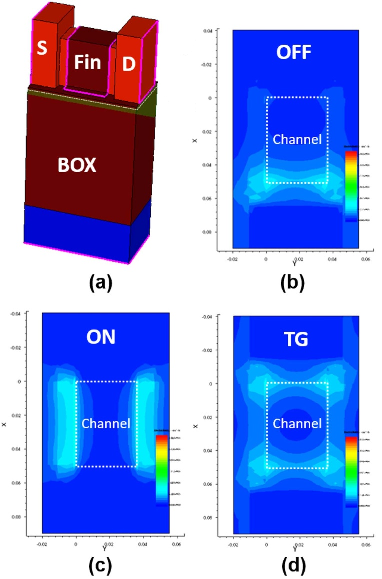S.Amorab, V.Kilchytskaa, F.Tounsia, N.Andréa, M.Machhoutb, L.A.Francisa, D.Flandrea
Characteristics of noise degradation and recovery in gamma-irradiated SOI nMOSFET
with in-situ thermal annealing
Solid-State Electronics; 108300; online 7 April 2022,
DOI: 10.1016/j.sse.2022.108300
a SMALL, ICTEAM Institute, Université catholique de Louvain (B)
b Faculté des Sciences de Université de Monastir (TN)
Abstract: This paper demonstrates a procedure for complete in-situ recovery of on-membrane CMOS devices from total ionizing dose (TID) defects induced by gamma radiation. Several annealing steps were applied using an integrated micro-heater with a maximum temperature of 365°C. The electrical characteristics of the on-membrane nMOSFET are recorded prior and during irradiation (up to 348 krad (Si)), as well as after each step of the in-situ thermal annealing. High-resolution current sampling measurements reveal the presence of oxide defects after irradiation, with a clear dominant single-trap signature in the random telegraph noise (RTN) traces. Drain current over time measurements are used for the trap identification and further for the defects' parameters extraction. The power spectral density (PSD) curves confirm a clear dominance of the RTN behavior in the low-frequency noise. A radiation-induced oxide trap is detected at 5.4 nm from the Si-SiO2 interface, with an energy of 0.086 eV from the Fermi level in the bandgap. After annealing, the RTN behavior vanishes with a further important reduction of flicker noise. Low-frequency noise measurements of the transistor confirmed the neutralization of oxide defects after annealing. The electro-thermal annealing of the nMOSFET allows a total recovery of its original characteristics after being severely degraded by radiation-induced defects.


